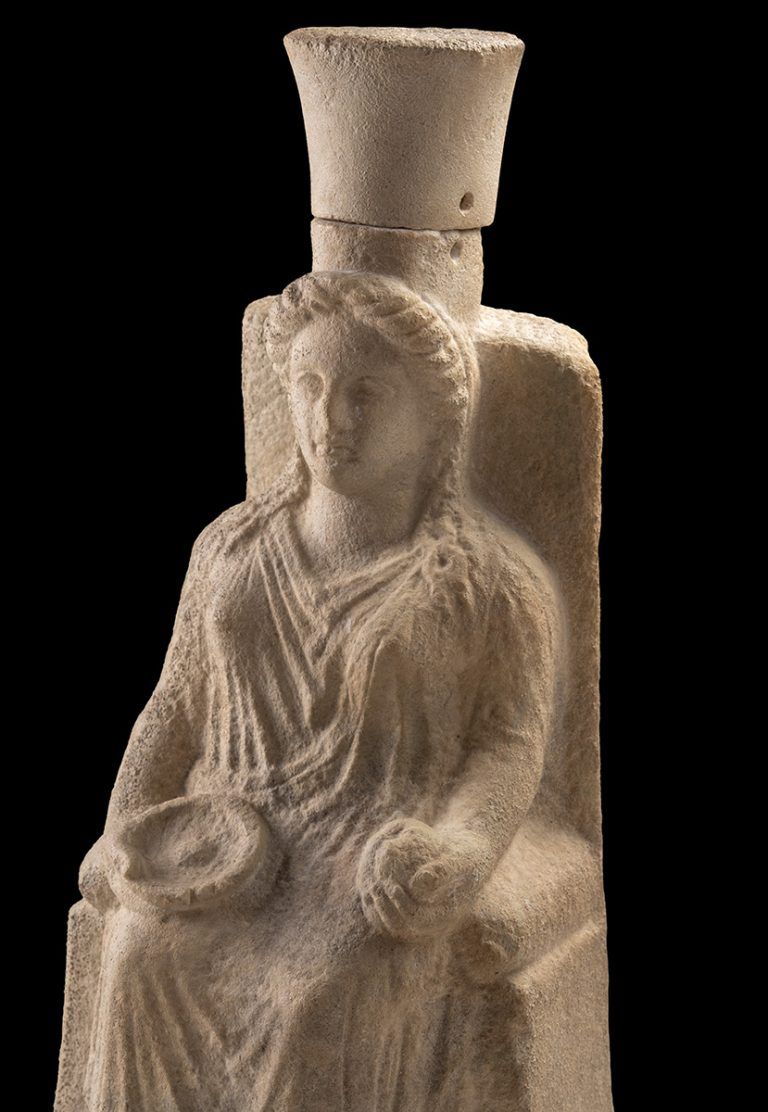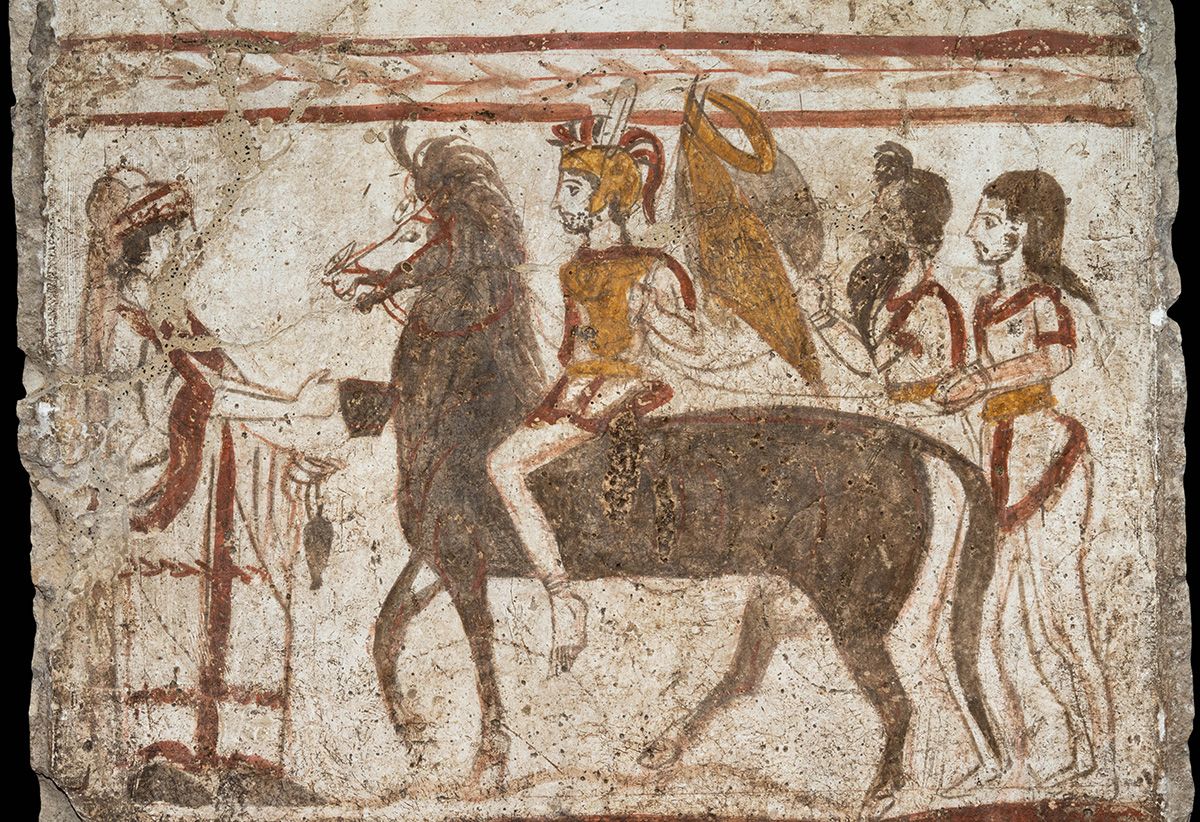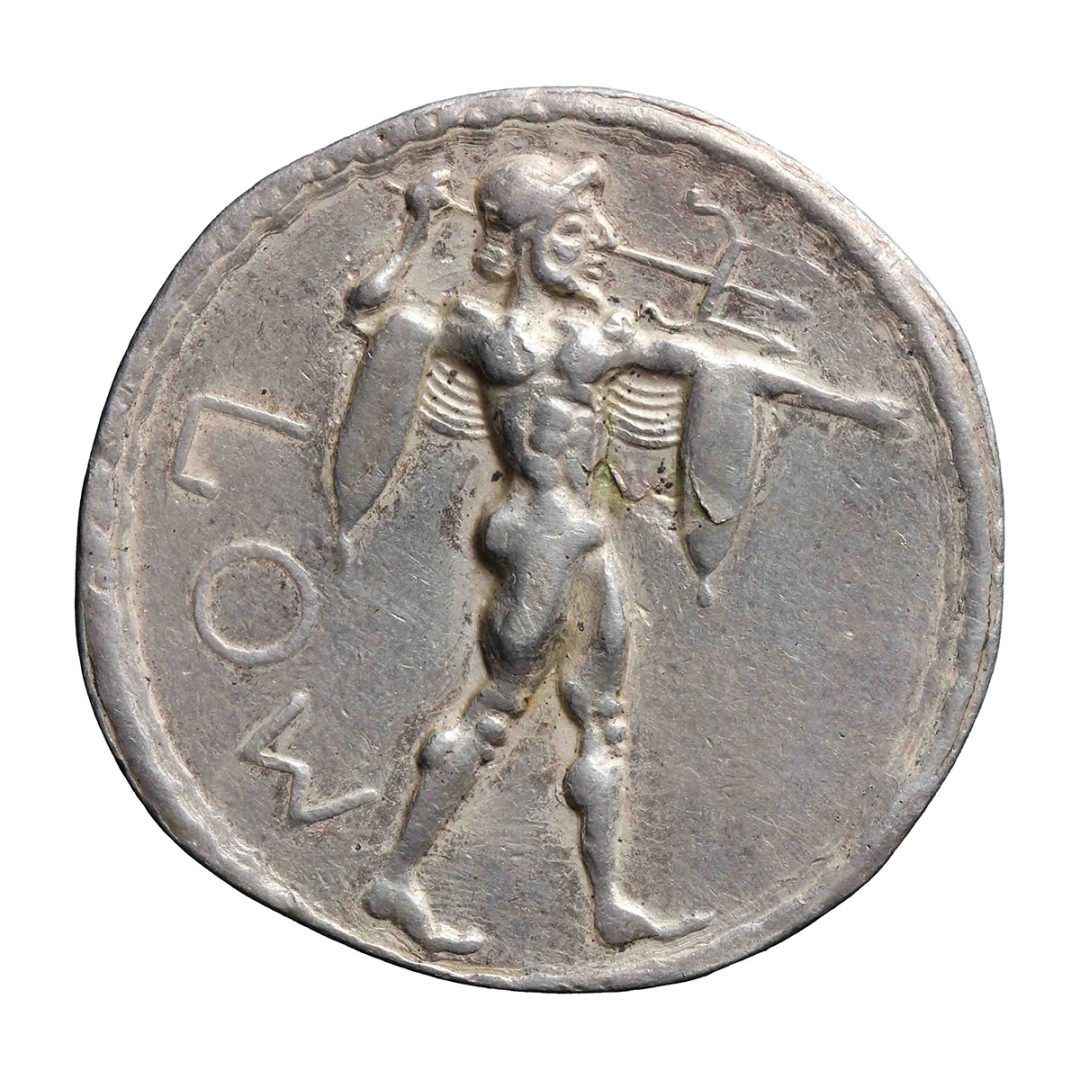Above: bronze votive statue | photo © Staatliche Museen zu Berlin, Antikensammlung, Johannes Kramer
Exhibition of masterpieces from Italy
on display until 25 August 2024
Greek and Roman city of goddesses
Poseidonia, as Paestum was originally called, was founded around 600 BC on the Bay of Salerno in Southern Italy. The dynamic history and cultural diversity of this city, famous for its Greek temples, lie at the heart of the exhibition Paestum. City of goddesses. More than two hundred of the most beautiful pieces from Paestum have been assembled, including unique tomb frescoes from the archaeological museum of Paestum, temple ornaments, figurines of goddesses, painted luxury pottery, fine glassware, votive offerings and coins.
The exhibition, created in close collaboration with the Italian Ministero della Cultura and the Museo e Parco Archeologico di Paestum e Velia, brings an exquisite selection of archaeological finds from ancient Paestum on loan to Leiden.
Masterpieces: statue of the goddess Hera and tomb frescoes
The absolute highlights of the exhibition are the splendid marble statue of the goddess Hera on a throne and eight beautifully painted tomb walls from the museum of Paestum. You will also see figurines of terracotta, bronze and marble, bronze Greek armour, incense vases, ornately painted pottery, fine glassware, and a wide variety of votive offerings and coins. The impressive decor of the exhibition galleries reflects the characteristic beauty of the Southern Italian landscape. The distinctive Doric temple architecture of the ancient city is evoked with exceptional eighteenth-century cork models, full-sized 3D prints of temple sculptures, original terracotta temple ornaments and reconstruction drawings.
Greek inhabitants
The first inhabitants of Poseidonia were Greeks from the fabulously wealthy and powerful city of Sybaris in Southern Italy. They founded the new city on the fertile plain of the River Silaris, now the Sele. The city’s prosperity was reflected in the three enormous temples that still dominate the landscape of Paestum today. Dedicated to the goddesses Hera and Athena, they are among the best preserved such temples in the world. Southern Italy was troubled by growing political unrest in the fourth century BC. Peoples from the interior captured some power from the Greeks. In Poseidonia, this led to the domination of the Lucanians, who already lived in Paestum and had close ties with the Greeks. The exhibition relates how the city’s story unfolded.
A multicultural society
The mixing of Lucanian and Greek traditions is typical of finds from this period. Rather than depicting the usual Greek customs, the richly decorated Lucanian graves show scenes of warriors, funeral games and the tending of the dead. Locally made earthenware objects, including decorated drinking cups and the characteristic fish platters of Campania, illustrate the daily lives of the Greeks and Lucanians. The abundance of terracotta votive offerings from this period offer a glimpse into their religious practices.
Romans in power
Poseidonia underwent a true metamorphosis when the Romans took power in the third century BC. The layout of the city changed considerably and buildings were removed to make way for Roman architecture. A new industry was introduced in Roman Paestum: the production of perfume from olive oil and roses. In the exhibition, this is illustrated with a variety of glass perfume bottles.
City of goddesses
The Greek motherland also brought the veneration of gods, heroes and mysteries to Southern Italy. The goddesses Hera, Athena and Aphrodite were worshipped in temples and sanctuaries, both within and beyond the city walls of Paestum. The continued worship of the goddesses over the centuries testified to their enduring significance for the city’s religious and cultural identity. Visitors to the exhibition will discover how the cult of goddesses was interwoven with the inhabitants’ religious and daily lives.

Statue of the goddess Hera | Collection: National Archaeological Museum of Paestum

Painted tomb wall | Collection: National Archaeological Museum of Paestum
Audio tour
Discover more fascinating stories about Paestum, both during your museum visit and at home or on the go. In various places in the exhibition, you can listen to an in-depth audio tour narrated by curator Ruurd Halbertsma. The free audio tour is available in Dutch and English.
Partnerships and loans
In addition to our own collection, the exhibition features loans from various museums in the Netherlands and abroad. The exhibition was made possible thanks to close collaboration with the Museo e Parco Archeologico di Paestum e Velia. Other lenders include: Musée du Louvre (Paris), Antikensammlung Staatliche Museen zu Berlin, the National Numismatic Collection (DNB, Amsterdam) and the Allard Pierson Museum (Amsterdam). The National Museum of Antiquities is supported by the Dutch lotery Vriendenloterij.

Coin with Poseidon, from Paestum | Collection: National Numismatic Collection, DNB